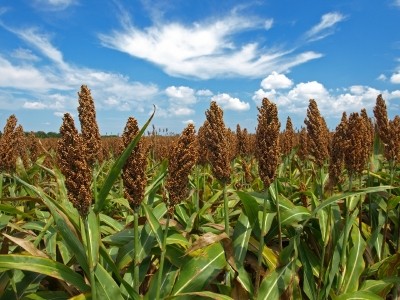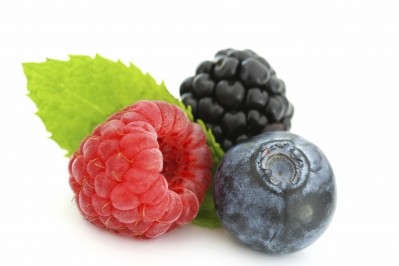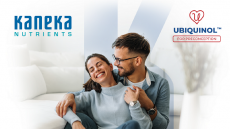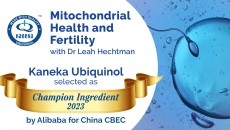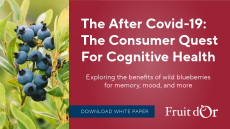Antioxidant focus
Cracking the code on antioxidant testing
In the second part of a four-part series, NutraIngredients attempts to get behind the acronyms and lift the lid on the available tests.
A search for antioxidant tests produces a list of possibilities, including ORAC, TRAP, FRAP, TEAC, and DPPH. With the dizzying list of tests available, how can industry, let alone consumers, make sense of the measures?
Dr Alex Schauss, senior director of natural and medicinal products research at natural products consultancy, AIBMR Life Sciences told NutraIngredients: “At an international meeting of scientists from over 20 countries doing studies of antioxidants that was held several years ago we all agreed that although ORAC was the standard bearer for performing antioxidant assays, owing to reproducibility and a strong published history of use, several antioxidant assays should be performed.
“For example, doing ORAC, TEAC, and FRAP, would conform to this recommendation. But not DPPH, because it is well known that results vary, hence, reliability, etc., is questionable. It’s the simplest and quickest way of doing some initial screening, but has yet to be shown to have any correlation with biological activity in vivo,” he said.
Chemical tests
Alongside the ‘standard bearer’ that is ORAC, a number of other assays have been developed, including the ferric reducing ability of plasma (FRAP), Trolox equivalent antioxidant capacity (TEAC), 2'-azinobis-(3-ethylbenzothiazoline-6-sulfonic acid) (ABTS), 2, 2'-diphenyl-l-picrylhydrazyl (DPPH), cupric reducing antioxidant capacity (CUPRAC), and the total radical-trapping antioxidant parameter (TRAP)..
All such assays have advantages and disadvantages, and work according to the same principle - by measuring the extent of a chemical reaction between an antioxidant and a free radical.
While many hold up ORAC as the leader in the field, it is important to appreciate that there are various forms of the test. ORAC determines the free radical scavenging activity of the antioxidant against the peroxyl radical for both water-soluble and lipid-soluble substances.
Brunswick Laboratories, the company offering ORAC testing, has also developed other forms of ORAC, including measures of the radical scavenging activity against peroxynitrite (NORAC) and hydroxyl (HORAC).
Cellular tests
Measuring the antioxidant activity in vitro is one thing, assessing if the antioxidant has activity inside a cell is another, and various cell-based systems have been proposed to answer these questions. One named the cellular antioxidant activity (CAA) assay, was developed by Cornell University researchers and dubbed the 'next step' in quantifying antioxidant activity.
"The CAA assay is a more biologically relevant method than the popular chemistry antioxidant activity assays because it accounts for some aspects of uptake, metabolism, and location of antioxidant compounds within cells," wrote Kelly L. Wolfe and Rui Hai Liu in the Journal of Agricultural and Food Chemistry.
The CAA uses cancer cells to measure antioxidant activity, and has been questioned by many in academia and industry. “CAA is fine for chemicals, but […] academics were not finding a correlation between CAA results and biological activity in vivo,” explained Dr Schauss.
Another cell-based assay is the CAP-e assay, which uses red blood cells with an added precursor dye inside the cell’s cytosol that only becomes a dye if it is damaged by oxidative stress. Antioxidants therefore would protect the cells from such damage.
Gitte Jensen, from NIS Labs, developer of the CAP-e antioxidant assay, told NutraIngredients: “We need to strive to show that antioxidants are doing something in people, and CAP-e is a stepping stone.”
The cost of the testing, currently performed in-house by NIS Labs, is around $300 per product, said Dr Jensen, which is in the same range as ORAC.
Combining the tests for a full picture
Many are seeing the importance of combining the results of the tests to gain a clearer and more complete picture of a food or supplement. Researchers form the University of Wisconsin-Madison proposed the relative antioxidant capacity index (RACI) as a integrated approach to the in vivo methods, combining ABTS, FRAP, three types of ORAC, PAOXI, and TRAP.
“RACI is a relative food antioxidant capacity ranking tool that presents the antioxidant capacity of each food in a standardized format for use by the food industry, scientists, and consumers,” they wrote in the Journal of Food Science (2007, Vol. 72, pp. R159-R165).
A paper published in the current issue of the Journal of Agricultural and Food Chemistry (2009, Vol. 57, pp. 1655-1666) reviewed the chemical assays available and concluded that a combination of approaches was important.
Researchers from the University of California, Davis, reported that it is generally “recommended to use at least two different types of assays. One is to monitor the early stage of lipid peroxidation, such as beta-carotene bleaching, conjugated diene, or FTC, whereas the other is to monitor the final stage of lipid peroxidation, such as TBA, MA/HPLC, or MA, GC.”
However, concentrating purely on the chemical assays does not go far enough for some. An article by Dr Jensen and her co-workers at NIS Labs, in collaboration with Dr Schauss, in the Journal of Agricultural and Food Chemistry (2008, Vol. 56, pp. 8319-8325) used a combination of ORAC, CAP-e, and the reactive oxygen species formation in polymorphonuclear cells (ROS PMN) assay to build a more complete picture of the antioxidant activity of four commercial products.
“When these tests were used sequentially, a foundation of understanding was generated, providing a more comprehensive understanding of antioxidant, anti-inflammatory, and immunomodulatory effects,” wrote Dr Jensen her co-workers.
“The four test products […] serve to illustrate different ways to look at complex antioxidant-containing natural products.”
With all the tests available to measure antioxidant activity, and the use of some of the measures as ‘marketing’ tools, the industry is tapping into the implied health benefits of antioxidants. However, the results of some randomised clinical trials (RCTs) are apparently at odds with the epidemiology results.
Tomorrow, NutraIngredients will consider where the science stands on antioxidants.
